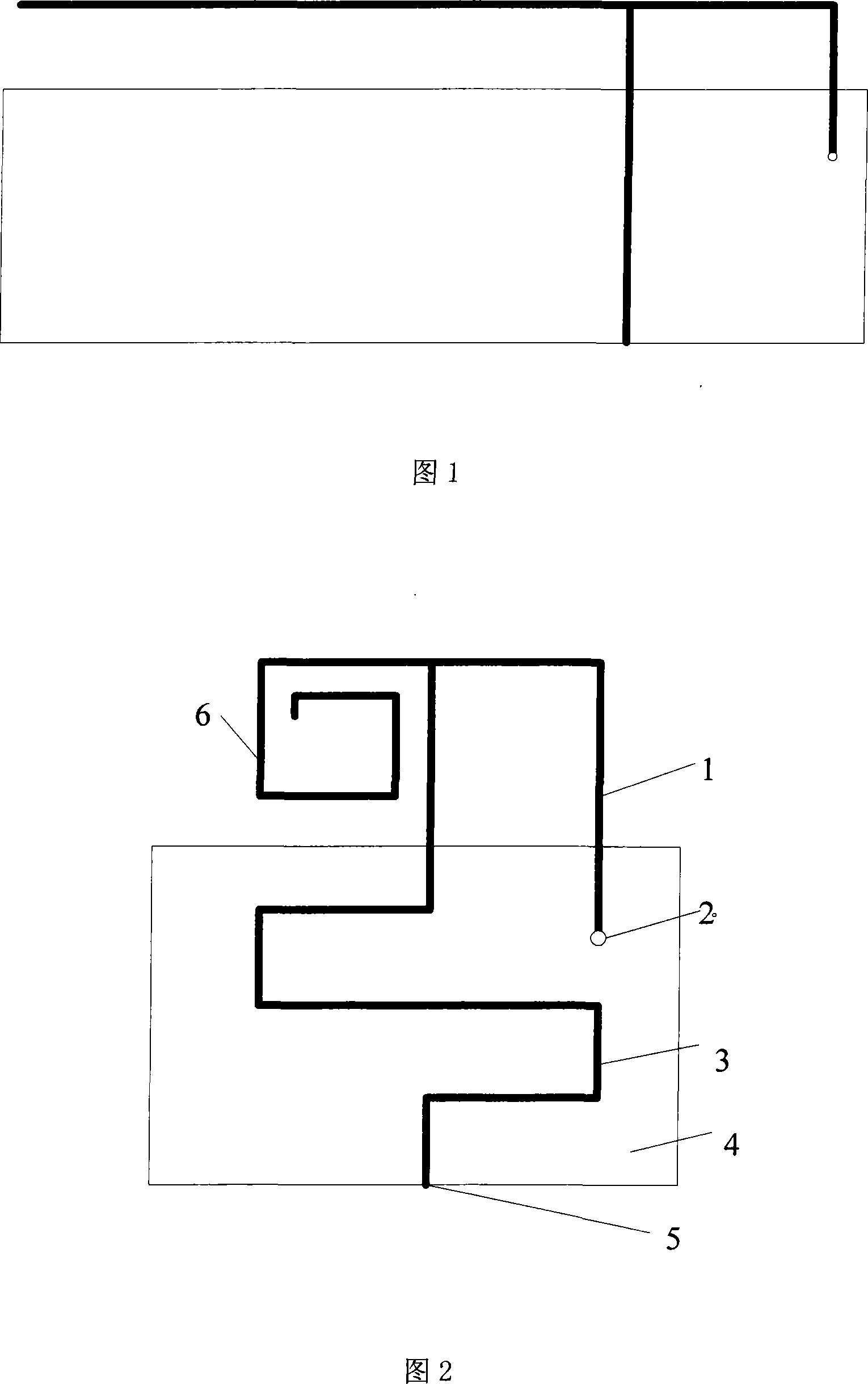Low temperature cofired ceramic antenna and very high frequency RF identification tag antenna formed of the same
A low-temperature co-fired ceramic and antenna technology is applied in the field of VHF radio frequency identification tag antennas, which can solve the problems of high loss and difficulty in further reducing the area, and achieve the effect of reducing loss, improving antenna gain, and realizing full integration.
- Summary
- Abstract
- Description
- Claims
- Application Information
AI Technical Summary
Problems solved by technology
Method used
Image
Examples
Embodiment Construction
[0021] The low temperature co-fired ceramic antenna of the present invention and the VHF radio frequency identification tag antenna composed of it will be described in detail below in conjunction with the embodiments.
[0022] The low-temperature co-fired ceramic antenna of the present invention includes low-temperature co-fired ceramics and metal wires. The low-temperature co-fired ceramics constitute the substrate of the metal wires, and the metal wires are printed on the low-temperature co-fired ceramic substrates together to form an antenna of a desired shape. .
[0023] The metal wires and the low temperature co-fired ceramics constituting the substrate can jointly form any desired shape. For example, antennas that together form an L-shaped structure, or an antenna with a meandering linear structure, or an antenna with a helical linear structure, etc.
[0024] As shown in Figure 2, the VHF radio frequency identification tag antenna made of low temperature co-fired cerami...
PUM
 Login to View More
Login to View More Abstract
Description
Claims
Application Information
 Login to View More
Login to View More - R&D Engineer
- R&D Manager
- IP Professional
- Industry Leading Data Capabilities
- Powerful AI technology
- Patent DNA Extraction
Browse by: Latest US Patents, China's latest patents, Technical Efficacy Thesaurus, Application Domain, Technology Topic, Popular Technical Reports.
© 2024 PatSnap. All rights reserved.Legal|Privacy policy|Modern Slavery Act Transparency Statement|Sitemap|About US| Contact US: help@patsnap.com








